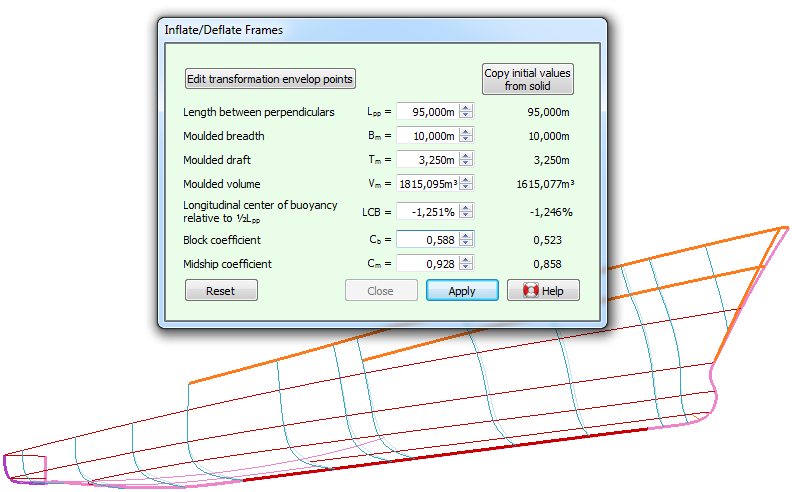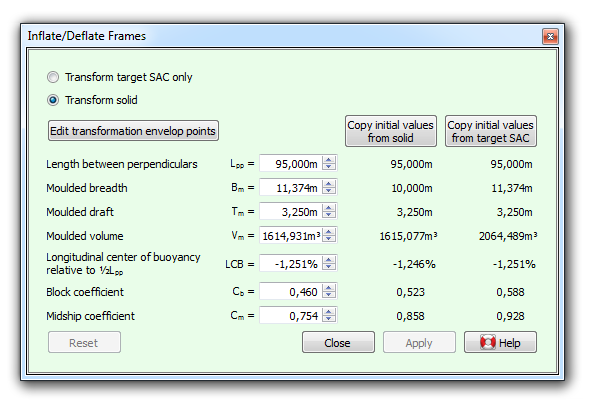 |
PIAS Manual
2025
Program for the Integral Approach of Shipdesign
|
 |
PIAS Manual
2025
Program for the Integral Approach of Shipdesign
|
This action, available from [Hydrostatics]→[Inflate/Deflate Frames] or with the keys <Alt><H><I>, performs a transformation on a single solid by moving points on frames inward or outward to satisfy specified main particulars. This transformation is also available from the Fairway main menu, see Inflate/deflate frames. Please also confer Hints for and backgrounds of the transformation process.

The columns of target values and initial values are identical to the ones in [Shift Frames (Lackenby)], with the addition of the midschip coefficient \(C_m\).
The inflation of frames can be constrained to not protrude a given set of longitudinal planes, the so-called transformation envelop. The planes pass through any defined envelop points successively, which can be edited by pressing the [Edit transformation envelop points] button. Transformation envelop points are discussed further in Specify envelop lines midship section.
If the project is configured to make use of a target sectional area curve or SAC (see General Fairway settings) then this SAC is transformed as well, and some additional options become available in the action panel (this applies to [Inflate/Deflate Frames] as well as [Shift Frames (Lackenby)]):

When [Transform solid] is checked (the default) then the target SAC is transformed as well as the solid. When [Transform target SAC only] is checked, the transformation is only applied to the target sectional area curve, the solid itself remains untouched. Its use is discussed below in Transformation of the target SAC only; the shape of the SAC can be inspected using [Hydrostatics]→[Sectional Area Curve (SAC) Window].
In addition, an additional column shows the main particulars according to the initial state of the target SAC, with an option to copy these to the target values for the transformation.
With the option [Transform target SAC only] or the button [Fit] in the action [Change the shape of the SAC] the target SAC can be transformed separately. Why should one do so? With the total hullform transformation, with a single command an entire ship hull is transformed, which goes pretty quick. The disadvantage is, however, that this transformation is acting globally, so no control of local details is possible. Fortunately, Fairway offers also tools to adapt frame shapes to the desired area, as given by the target SAC. This process is more laborious, but offers much more local control. More details can be found in Show Target Frame Area.